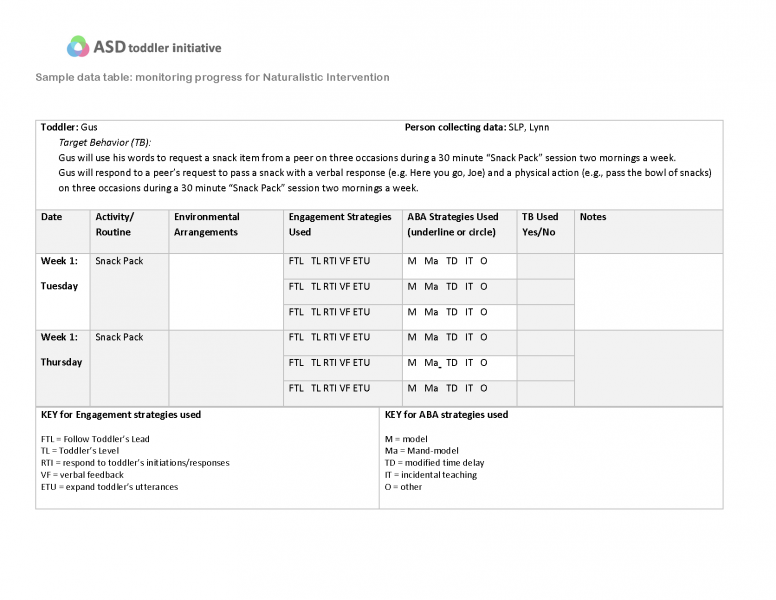Step 3.1 Gather and record data
Develop a system to monitor the effectiveness of the intervention that outlines where, when, by whom, and how data are collected.
Monitor the frequency and duration of the interfering behavior and the
replacement behavior
Collect data to monitor the toddler's progress. Data will be collected at planned time periods by taking language samples and/or other data (for example, frequency counts) on strategies that were used to elicit the targeDt behavior. Because naturalistic intervention involves having the conversational partner engaged with the toddler, it can be helpful to either:
- video record the session and collect data off the video at a later point in time or
- have an observer take the data.
However, this may not always be possible, especially in home-based settings where real-time data collection is the most feasible. Then, the interventionist or parent would want to use data collection measures and procedures that are easily accessible during intervention and efficient. This may involve making marks on a piece of masking tape applied to a hand or selecting off tallies on a tablet or smart phone.

Gus will use his words to request a snack item from a peer on three occasions during a 30 minute “Snack Pack” session two mornings a week.
Gus will respond to a peer’s request to pass a snack with a verbal response (e.g. Here you go, Joe) and a physical action (e.g., pass the bowl of snacks) on three occasions during a 30 minute “Snack Pack” session two mornings a week.
Example of data collection procedures that may be used real time in home and center-based settings:
-
Wrapping paper or masking tape around one’s wrist on which data can be tallied.
-
Placing data collection sheets near the location of the activity.
-
Gathering data from multiple toddlers in a center-based group on address labels that can later be peeled off and put on individual toddlers’ data sheets.
-
Using technology such as tablet or smart phone to click off data.
